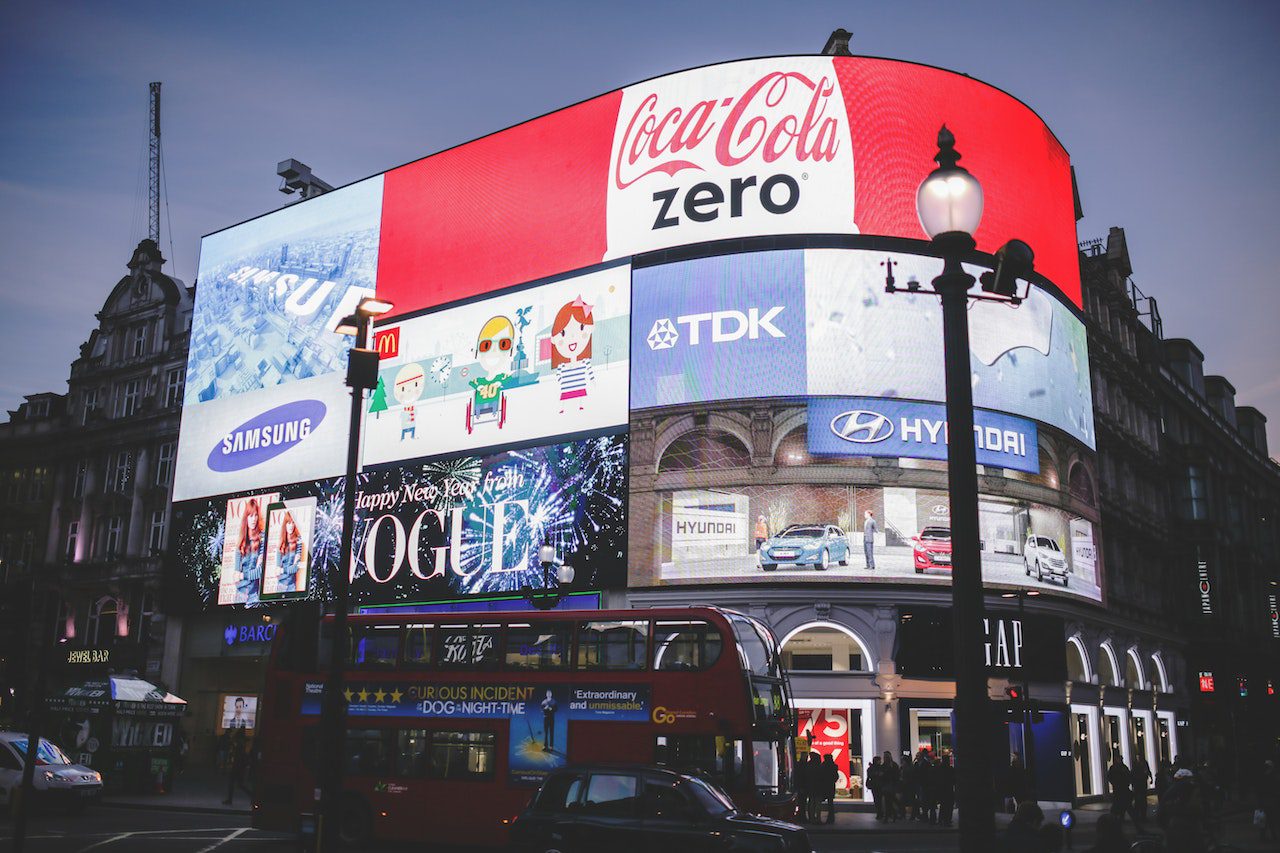Unlocking the Power of Minneapolis Billboards: From Traditional to Digital Out-of-Home (DOOH) Advertising
Out-of-home (OOH) advertising has been a longstanding medium for marketers to capture the attention of a wide audience. From the classic billboards that line highways to posters on bus shelters, OOH advertising has proven to be a powerful tool in reaching consumers. However, with the advent of digital technology, the landscape of OOH advertising is rapidly evolving.
This article explores the transformation of outdoor advertising from traditional static displays to dynamic digital out-of-home (DOOH) billboards and how marketers can leverage this medium to enhance their brand messaging and engage with consumers in innovative ways.
The Evolution of OOH Advertising
Traditional outdoor advertising
Outdoor advertising refers to any form of advertising media that is found outside of the home. Traditional advertising includes static signage such as billboards, posters, and painted murals. These forms of advertising have been around for centuries and continue to have a significant impact on consumers. Think about the iconic billboards in Times Square or the eye-catching posters plastered on the sides of buildings. Traditional outdoor advertising has always been known for its ability to capture attention and deliver messages to a wide audience.
Digital Out-of-Home (DOOH) Advertising
In recent years, digital technology has revolutionized the outdoor advertising industry. Digital out-of-home (DOOH) advertising combines the proven success of traditional advertising with the dynamic capabilities of digital channels. DOOH displays are equipped with digital screens that can showcase dynamic and interactive content, making them more engaging and impactful for consumers. This shift to digital signage has opened up new possibilities for marketers, allowing them to target specific audiences, measure campaign effectiveness, and deliver personalized messages in real-time.
The Power of Advertising Billboards
Reach and Impact
Whether we’re talking about Minneapolis billboards, or moving Uber cars billboards, these tools have the power to reach a wide audience and make a lasting impression. With their strategic placement along major highways, busy streets, and popular destinations, billboards have the potential to capture the attention of thousands of commuters and pedestrians every day. The size and visibility of billboards make them hard to ignore, ensuring that your message gets noticed by a diverse range of consumers.
Targeted Advertising
While billboards are known for their broad reach, digital billboards offer the advantage of targeted advertising. With the ability to change content in real-time, digital billboards can deliver personalized messages to specific audiences based on factors such as location, time of day, or weather conditions. For example, a billboard advertising a new restaurant downtown can display different messages during lunchtime and dinner hours, targeting office workers and residents in the area at the most relevant times.
Creativity and Flexibility
Digital billboards such as billboard advertising Las Vegas or any other location also provide marketers with the opportunity to showcase their creativity and flexibility. Unlike traditional billboards that feature static images or text, digital billboards can display dynamic content, including videos, animations, and interactive elements. This allows brands to create more engaging and memorable experiences for consumers. Whether it’s a captivating video ad or an interactive game, digital billboards offer endless possibilities for marketers to capture attention and leave a lasting impression.
Understanding the Different Types of Billboards
Traditional Billboards
Traditional billboards are the iconic roadside displays that have been a staple of outdoor advertising for decades. These billboards feature static images or text and are typically found along highways, busy streets, and major intersections. Traditional billboards offer wide visibility and are effective in capturing the attention of drivers and pedestrians. They are an excellent choice for brand awareness campaigns and reaching a broad audience.
Digital Billboards
Digital billboards, on the other hand, are equipped with digital screens that can display dynamic content. These billboards offer the flexibility to change messages and creative elements in real-time, allowing for more targeted and engaging advertising. Digital billboards are ideal for campaigns that require frequent updates, personalized messaging, or interactive elements. They can be strategically placed in high-traffic areas or specific neighborhoods to reach the desired audience effectively.
Mobile Billboards
Mobile billboards are a unique form of advertising that involves placing digital screens on vehicles such as trucks or buses. These mobile billboards can travel throughout the city, reaching different neighborhoods and target audiences. Mobile billboards are highly visible and can create a sense of novelty and surprise for consumers. They are particularly effective for event promotion, product launches, or campaigns that require high mobility and flexibility.
Leveraging the Power of Digital Out-of-Home (DOOH) Advertising
One of the key advantages of digital billboards is the ability to leverage programmatic advertising. Programmatic DOOH platforms enable advertisers to plan, buy, and optimize their campaigns in a streamlined and automated manner. With programmatic advertising, marketers can set parameters around their target audience, budget, and campaign objectives. The platform then uses data and algorithms to deliver ads to the right people at the right time, maximizing the effectiveness of the campaign.
Targeting Capabilities
Digital billboards offer advanced targeting capabilities that allow advertisers to reach specific audiences with precision. Through audience data and location-based targeting, marketers can deliver personalized messages to consumers based on factors such as demographics, interests, and behaviors. For example, a sports apparel brand can target digital billboards near sports stadiums to reach sports enthusiasts or display ads for fitness products in neighborhoods with a high concentration of gyms.
Real-Time Updates and Dynamic Messaging
One of the key features of digital billboards is the ability to make real-time updates and display dynamic messaging. This flexibility allows marketers to tailor their messages based on current events, weather conditions, or other contextual factors. For example, a coffee brand can display ads for iced coffee on a hot summer day or promote warm beverages during colder months. Real-time updates and dynamic messaging ensure that your ads remain relevant and engaging to consumers.
Measurable Impact
Digital billboards offer marketers the advantage of measurable impact. Through advanced analytics and tracking technologies, advertisers can gather data on the performance of their campaigns, including the number of impressions, engagement rates, and foot traffic generated. This data-driven approach allows marketers to optimize their campaigns, make informed decisions, and demonstrate the ROI of their DOOH advertising efforts.
Enhancing Your Brand Messaging with Digital Billboards
Captivating Creatives
With digital billboards, marketers have the opportunity to create captivating creatives that grab attention and leave a lasting impression. The dynamic nature of digital billboards allows for the use of videos, animations, and interactive elements that engage consumers and make the brand message more memorable. By leveraging the creative possibilities of digital billboards, marketers can create unique experiences that resonate with their target audience.
Contextual Relevance
Digital billboards enable marketers to deliver contextually relevant messages to consumers. By incorporating real-time data and location-based targeting, brands can tailor their ads to match the interests, needs, and preferences of the audience in a specific area. For example, a clothing brand can display ads for winter coats in neighborhoods that experience colder temperatures or promote swimwear near lakes and beaches during the summer months. Contextual relevance enhances the effectiveness of the ad and increases the likelihood of consumer engagement.
Interactive Experiences
Digital billboards offer the opportunity to create interactive experiences for consumers. By incorporating touch screens, motion sensors, or QR codes, brands can encourage consumers to interact with the billboard and actively engage with the content. This interactivity not only enhances the consumer experience but also provides valuable insights and data for marketers. Interactive digital billboards can be used to collect customer feedback, offer personalized recommendations, or facilitate social media sharing, creating a deeper level of engagement with the brand.
The Future of Outdoor Advertising: Embracing Digital Innovation
As technology continues to advance, the future of DOOH advertising looks promising. Here are some key trends and innovations that will shape the future of advertising:
Artificial Intelligence (AI) Integration
Artificial intelligence (AI) is expected to play a significant role in the future of digital billboards. AI-powered algorithms can analyze consumer data, behavior patterns, and contextual information to deliver highly personalized and relevant ads. AI can also optimize ad placements and creative elements in real-time based on audience response and engagement.
Augmented Reality (AR) Experiences
Augmented reality (AR) is another technology that will revolutionize the way consumers interact with digital billboards. AR-enabled billboards can overlay virtual objects or information onto the physical world, creating immersive and interactive experiences for consumers. Brands can leverage AR to showcase products, provide virtual try-on experiences, or offer gamified interactions that captivate and engage consumers.
Data-Driven Insights and Automation
The future of digital billboards lies in data-driven insights and automation. With the integration of advanced analytics and artificial intelligence, marketers can gather valuable data on consumer behavior, preferences, and engagement. This data can then be used to optimize ad placements, creative messaging, and campaign strategies, ensuring maximum impact and ROI.
Integration With Mobile and Online Channels
Digital billboards will increasingly integrate with mobile and online channels to create a seamless omnichannel experience for consumers. Marketers can leverage location-based targeting to deliver synchronized messages across digital billboards, mobile devices, and online platforms. This integration ensures a consistent brand message and a cohesive customer journey across different touchpoints.
Outdoor advertising have come a long way from traditional static displays to dynamic digital billboards. With their wide reach, targeting capabilities, and creative possibilities, digital billboards offer marketers a powerful tool to enhance their brand messaging and engage with consumers in innovative ways. By leveraging programmatic advertising, targeting capabilities, and real-time updates, marketers can make their campaigns more effective, measurable, and impactful. Embracing digital innovation in out-of-home advertising will ensure that billboards will remain a dynamic and effective medium for years to come.


